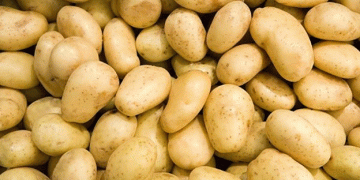“I had one field that had a pH of 8.5 and was high in calcium and magnesium, and even after one year of using SulphGro, our pH dropped to 7.4 and our calcium and magnesium were down too,” he says. “It was shocking that after only a year, that’s what happened.”
Byproduct from oil and gas industry offers sustainable fertilizer input

A Canadian company has launched a product that could help farmers meet sustainability demands without comprising yield – and provide a cost advantage over conventional products. SulGro is a non-synthetic, micronized elemental sulphur product that Sultech Global Innovation Corp. of Calgary says can replace conventional ammonium sulphates found in synthetic fertilizer programs.
Why it matters: Synthetic fertilizers are considered a contributor to global climate change, and agriculture is searching for more sustainable but equally effective solutions. SulGro is a liquid formulation made from elemental sulphur that is recovered from the oil and gas industry. This byproduct is now sold as a bulk commodity, often at a loss.
“At Sultech, our goal is two-fold: to take a bio-product from a major Canadian industry and turn it into a value-added product that can help Canadian farmers while also offering an environmentally friendly alternative that will help improve the sustainability of crop production,” says Conor Wrafter, the company’s executive vice-president of corporate development.
According to Sultech, six years of agronomy research and one year of soil amendment research have proven the product’s benefit compared to ammonium sulphate. SulGro converts to sulphate in seven to 10 days and has a 90 per cent conversion to sulphate over the application season. That means the crop gets nutrition all season instead of only when the product is applied.
“Our product can match the performance of synthetic fertilizer in ideal circumstances but outperforms in adverse situations like flood and drought where synthetic gets washed into the water or causes germination tension,” adds Wrafter. There are other benefits at the farm level, says Sultech’s Murray MacKinnon, executive vice-president of commercialization. SulGro can be applied any time using standard equipment, offering growers greater flexibility in application timing. The product has always been price competitive, he says, but recent price jumps and tight supply for conventional fertilizers have given Sultech an advantage.
“We had a $1,500 per section price advantage in the past, but now that’s at $6,500 or more, so when your savings can cover field prep and fuel costs for farmers, you get their attention,” MacKinnon says. “We are also seeing a huge shortage of liquid sulphur components for canola, lentils and peas, so this is a new market for us that is helping to alleviate that global shortage.”
Adrian Kenworthy is a cash cropper near Crossfield, Alta., just north of Calgary. He says he has had success using SulGro as a soil amendment over the last two years to reduce pH levels in his soil.
“I had one field that had a pH of 8.5 and was high in calcium and magnesium, and even after one year of using SulGro, our pH dropped to 7.4 and our calcium and magnesium were down too,” he says. “It was shocking that after only a year, that’s what happened.”

Kenworthy has also experimented with the product as a foliar treatment on canola, and although it made sulphur available to the plants, the crop was damaged by hail before harvest so he couldn’t determine any yield-boosting impact. “I’m hopeful we get some further results on this. It does take some time but when you see the results yourself, you just get on with it,” he says. “We are now using it on all the fields we have and we wouldn’t be doing that if we didn’t believe in it.”
Over the last year, SulGro has been working with Bioenterprise and Canada’s Food and Agri-Tech Engine to bring the product to market and refine its pitch to potential investors and partners. In three years, the company hopes to be producing at least 45,000 tons of micronized sulphur in Western Canada and have a plan for domestic and international expansion.
“This is a global problem and our product can work on any crop that needs sulphur, from canola and pulses in France to tea in China and Indonesia,” says MacKinnon.






